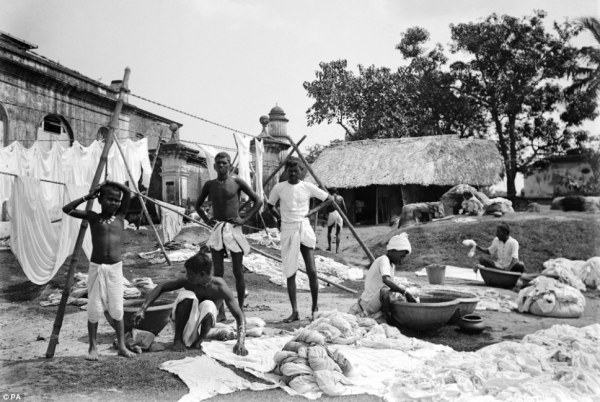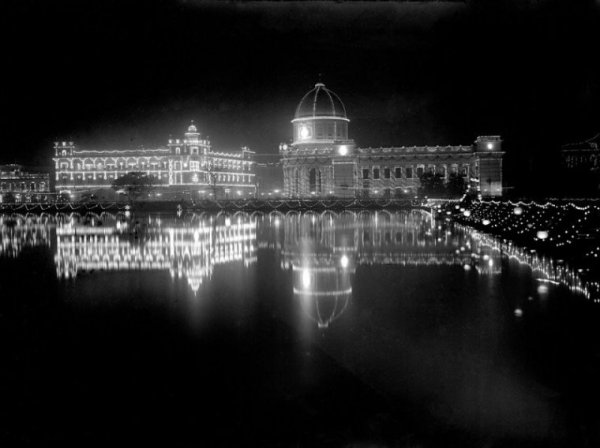| Blogs > looklook > Views from the Balcony |
|
Century old rare photos of British Raj. While browsing Google for an old photo of the Sunderbans, world’s largest mangrove forest located mostly in Bangladesh, I came across by chance a collection of black and white photos taken more than a century ago, capturing the essence of life in the sub-continent during the British Raj. According to Ms.Sanskriti Sinha , the negatives of this collection of photographs, wrapped in the copies of the Statesman newspaper dating from 1914, were found in a shoe box in the archives of the Royal Commission on the Ancient and Historical Monuments of Scotland by chance! I don’t know if the claim of Ms. Sinha is correct or not. However, I can tell everyone that some of the imageries of the photographs simply reminded me the tumultuous and horrible life that we had to live during the last 10 years of British Raj. They followed the famous divide and rule policy while governing us and they did not forget to leave us divided when they were forced to leave us free! I was a then passing the usual age of innocence! As I am allowed to post only 10 of these amazing photographs here on this page, I have chosen them from those taken from various places of the Greater Bengal, especially most from Kolkata, the then capital of former Greater Bengal and also from Sunderbans area of my motherland! Some of the photos uploaded here on this page relate to and highlight the celebrations of the visit of King George V and Queen Mary to the city of Calcutta (now called Kolkata) in 1912, and other photos depicts life of common men and women lived in Bangladesh, a century ago when my Dad was a college student! I have intentionally avoided posting the pictures of the other side of life that most of the common men had to endure during British Raj for obvious reason. Those who are interested to view all the 178 photos may please browse Google for finding them in one place.           |
|||
|
Buildings in Calcutta(now Called Kolkata) lit at night for the 1912 British Royal Visit by King George V and Queen Mary. Another picture depicts an open air Laundry Zone !
| ||
|
Interesting! I like to see old pictures.
| ||
|
Maisie,hello, Thank you so much for your responses, Maisie. I appreciate. I am glad to learn that you have bought clothing made in my country. I have read your responses with much interest. Perhaps you know that everything has two sides,-good and bad! But when bad outweighs the good, we forget to appreciate the good done to us! This is human nature, Maisie! Here I take the opportunity to quote an extract from an article written by Dr.Dipak Basu , Professor in International Economics in Nagasaki University, Japan for you to read and ponder upon. Quote Before the British came, India was one of the richest countries in the world. In 1800, India, China and Egypt (and probably many of the kingdoms of central Africa) were economically more developed than Britain. Indeed the British had nothing for sale that was of interest to the Indians or Chinese. When the British left in 1947, India was poor and industrially backward. Britain did bring free trade to India and China. Britain had extracted large surpluses from India, and forced it into a free-trade pattern, which obliged India to export commodities and become a dumping ground for British manufactures. Historians estimate that the net transfer of capital from India to Britain averaged 1.5 percent of GNP in the late nineteenth century. The wealth transfer was financed by a persistent trade surplus of India, which was sent back to Britain or spend to expand the British Empire. India’s export-import ratio was 172.5 percent in 1840-69, 148 percent in 1870-1912, and 133.4 percent in 1913-38. This export orientation was a tool of colonial exploitation, and free trade a British ploy to force its manufactures on India and crush domestic industry. Instead of enriching the world, the British Empire impoverished it. The empire was run on the cheap. Instead of investing in the development of the countries they ruled, the British survived by doing deals with indigenous elites to sustain their rule to extract maximum amount of revenues for Britain itself, which the British historians now deny. Whether in 18th-centuryIndia, 19th-century Egypt or 20th-century Iraq, the story is the same. As long as taxes were paid, the British cared little about "the rule of law". They turned a blind eye to Indian landlords who extracted rent by coercion or indigo and opium - planters who had forced Indian farmers to cultivate and their products were forced upon the Chinese. Unable to sell anything to the Chinese, Britain sent in its gunboats, seizing Hong Kong and opening up a market for opium grown in India. Despotic repression was fostered where it protected British interests. India is the prime example. Ruled by Muslims before the British, India was a prosperous, rapidly commercializing society. The Jagat Seth, India's biggest banking network and financier of the East India Company, rivaled the Bank of England in size. British rule pauperized India. The British restricted Indian weavers' ability to trade freely and the result was a drastic drop in living standards. Dhaka, now the capital of impoverished Bangladesh, was once a state-of-the-art industrial city. Its population fell by half during the first century of British rule. Now, average Indian incomes are barely a tenth of the British level in terms of real purchasing power. It is no coincidence that 200 years of British rule occurred in the intervening time. Rabindranath Tagore wrote “The chronic want of food and water, the lack of sanitation and medical help, the neglect of means of communication, the poverty of educational provision, the all pervading spirit of depression that I have myself seen to prevail in our villages after over a hundred years of British rule make me despair of its beneficence .....Unquote. Wish you all the best. Take care and be happy always
| ||
|
Interesting! I like to see old pictures. Take care and stay well, Abelle.
| ||
|
The pictures are amazing. Thanks for another informative and well-written glimpse into your culture. We have come so far. YOU have come so far. Fossil Thank you so much for your response. I appreciate. Yes, we have come so far but we have more distance to travel. Surely, someday we shall reach our goal! Best wishes. Take care.
| ||
|
Lisztomania,Hello, These are century old black and white photos, some of which were probably taken by a Box Camera, Liszt. But they silently tell us stories of our past vividly! Yes, I have read and re read Forster's "A Passage to India". May be, I should read it again. Just look at the 6th photo. Here a street hair dresser (in plain English, a barber) giving a haircut in Strand Road South, Calcutta! Amazing Scene! You would not see such scene now in a city of this divided subcontinent! Liszt, the last sentence of your post at above reminds me the poem titled "“The Ballad of East and West,” by Rudyard Kipling. Take Care and Stay Happy.
|
×
×


